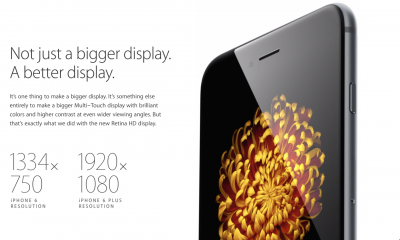The reason that Apple did not jump into the market for large phones early on was because there simply was no demand or interest in those kinds of devices. When the first phablets were released by Samsung and other Asian companies, they were received tepidly, as reviewers panned the devices as awkward and too large for easy use. However, as time passed and consumers were given time to consider the hybrid devices, people’s acceptance grew as they got used to concept. This trend mostly occurred in Asian countries where smartphones are used as primary computers, giving U.S. companies, such as Apple, little incentive to release such devices. Eventually, as Americans’ interest for monster phones also began to grow, Apple caught on and developed bigger screens for the iPhone 5, and later, the iPhone 6 and iPhone 6 Plus.
Thus, Apple’s move was not out of spite, but was inevitable due to the shifts in the dynamic smartphone market. Consumers, not just Android, prompted the existence of the new, monster iPhones.
Written by Raymond Cao’17








